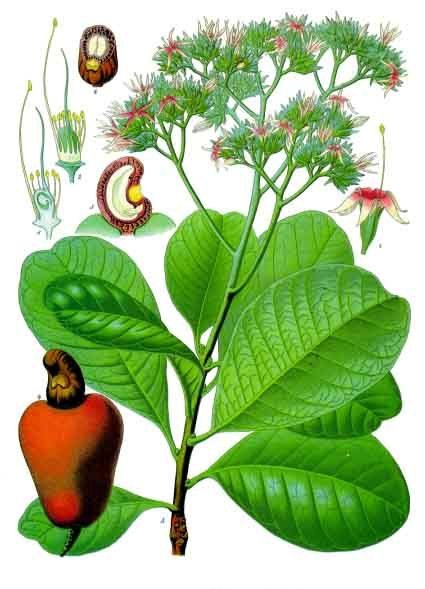The Circle of Life
Anacardium occidentale, like all other angiosperms, has a life cycle that includes "alternation of generations." This means that during its life time, the plant alternates between a dominant diploid sporophyte generation and a haploid gametophyte generation.
Within the flower's anthers (male parts), are thousands of diploid spores called microsporangium. These then divide by meiosis to produce a haploid pollen grain. Within the flower's carpals (the female parts), a single diploid macrospore is contained in the ovule. This divides by meiosis to give four megaspores, though only one survives. Since they produce different kinds of spores, angiosperms are considered heterosporous. Then the pollen grain (containing the sperm), lands on the stigma to pollinate the flower. It is here that the pollen grain germinates and develops into the zygote to begin the next sporophyte generation.
In many
angiosperms, flowers are pollination is helped along by insects,
the wind, other organisms, etc. Anacardium occidentale
is affected by all of these factors, however studies have shown
that in this particular tree, wind is less of a factor than
would be expected. According to the
Journal of Agricultural Science, issue number
0021-8596, studies suggest that the primary
pollinator of
cashew trees is surprisingly the honey bee,
Apis mellifera.To
learn more about Apis mellifera, click
here to visit a fellow student's web page!

